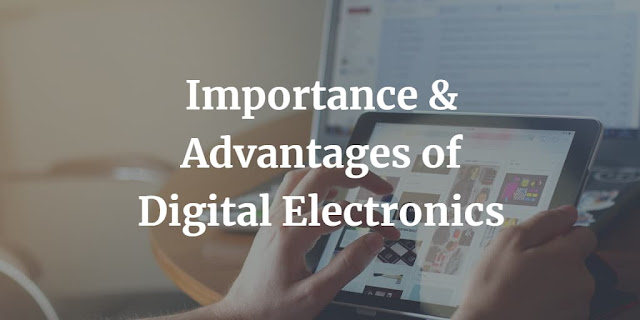Today, We will begin with a short introduction to digital electronics and learn more about analog and digital circuits in future posts. Before we get started with the formal introduction, I think some questions would have already started running through your mind. Alright, I will put down the question in a better way.
Introduction to Digital Electronics
I hope everyone till today would have used or listened to the word ‘digital’ at least once. Well, If you do not remember, the following will definitely remind you.
“I wanna buy a new digital camera.”
“Look at the signboard. It’s a digital display.”
“Hooray! I got a new digital watch for my birthday .”
Technically, all these devices are called digital circuits. The term digital means performing operations on digits(0,1,3,….. etc.) or using these digits for producing information in a form that humans can understand.
Most digital circuits use a binary number system(which has only 2 digits, i.e., 0’s and 1’s), but we will not worry about number systems at this point.
Different authors organize the chapters differently. I always feel starting the course with digital electronics will help the students to feel comfortable with the course. Digital electronics will put the students in a better position to understand electronics because they can relate to the things that exist today.
I will also try to give examples that can help relate the concepts that you learn with the day-to-day activities.
At the same time, I will also try to demonstrate some simple experiments that can be done at home as and when we come across various concepts.
Importance of Digital electronics
Earlier, Logic circuits were built using bulky and unreliable components such as transistors, resistors, and vacuum tubes, etc. These components existed individually, and circuits built using these components did not perform as expected, mainly due to the interconnections issues that were common in these circuits. The development of integrated circuits played a significant role in solving the problems of logic circuits. These integrated circuits facilitated to place of a large number of transistors and on a single chip.
Easy to Design: The advent of integrated circuit technology has made it easier to design digital circuits. Today, the designer is not required to know the basic operation of various components such as capacitors, transistors, etc., which involves complex mathematical calculations. If the designer knows the operations of these components, he always has a better hand over other designers.
Reliability: Once a digital circuit is designed. For a given set of inputs, the circuit always produces the same output at any instant of time, unlike analog circuits, whose outputs vary with variation in the environment.
Highly Flexible: In digital circuits, with the help of the software associated with the underlying digital circuit, we can easily change the functionality of the digital circuit without changing the actual circuit. These circuits are generally referred to as programmable digital circuits(we will discuss this in later chapters).
Cheaper: The rapid advancements in IC (integrated circuit) technology such as the existing VLSI(Very Large Scale Integration) technology has made it possible to produce highly complex digital circuits at low costs.
